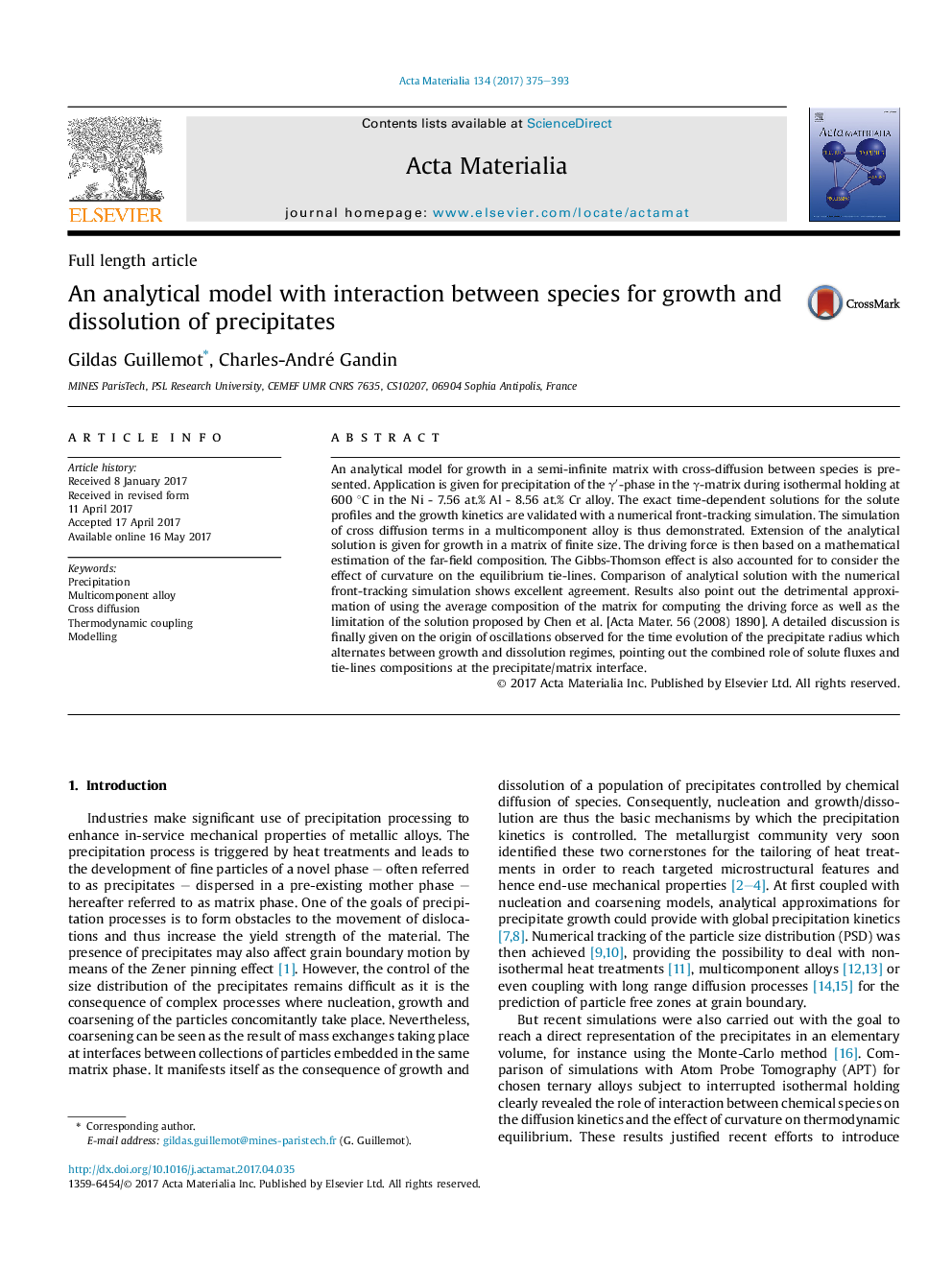| Article ID | Journal | Published Year | Pages | File Type |
|---|---|---|---|---|
| 5435991 | Acta Materialia | 2017 | 19 Pages |
An analytical model for growth in a semi-infinite matrix with cross-diffusion between species is presented. Application is given for precipitation of the γâ²-phase in the γ-matrix during isothermal holding at 600 °C in the Ni - 7.56 at.% Al - 8.56 at.% Cr alloy. The exact time-dependent solutions for the solute profiles and the growth kinetics are validated with a numerical front-tracking simulation. The simulation of cross diffusion terms in a multicomponent alloy is thus demonstrated. Extension of the analytical solution is given for growth in a matrix of finite size. The driving force is then based on a mathematical estimation of the far-field composition. The Gibbs-Thomson effect is also accounted for to consider the effect of curvature on the equilibrium tie-lines. Comparison of analytical solution with the numerical front-tracking simulation shows excellent agreement. Results also point out the detrimental approximation of using the average composition of the matrix for computing the driving force as well as the limitation of the solution proposed by Chen et al. [Acta Mater. 56 (2008) 1890]. A detailed discussion is finally given on the origin of oscillations observed for the time evolution of the precipitate radius which alternates between growth and dissolution regimes, pointing out the combined role of solute fluxes and tie-lines compositions at the precipitate/matrix interface.
Graphical abstractComposition paths in the ternary phase diagram NiAlCr during γâ²-precipitate growth in the γ-matrix at 600 °C for alloy Ni-7.56 at.% Al-8.56 at.% Cr. Non-diagonal diffusion, curvature effect on equilibrium and coupling with thermodynamic databases are accounted for. Interfacial compositions (blue) in γ, Xγ/γâ², and (orange) in γâ², Xγ/γâ², are shown as well as the average composition (purple) in the γ-phase, X¯γ. The equilibrium lines are drawn (black - plain) for a flat interface and (grey - dashed) considering the effect of curvature at the end of the simulation corresponding to (black - dashed) the tie-line. Time evolution of the equilibrium is accessible through the Supplementary Material, showing the progressive construction of all represented quantities. The symbols highlight the times when growth/dissolution transitions take place, with indexing showing corresponding time compositions.Download high-res image (158KB)Download full-size image
